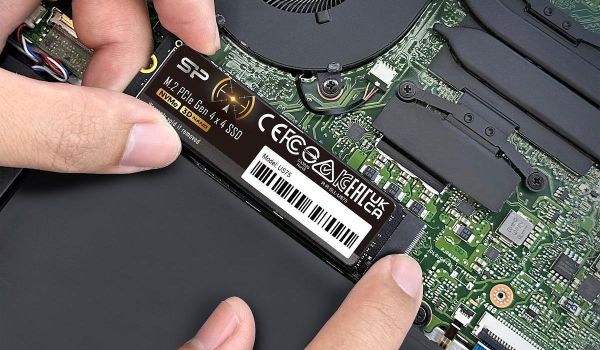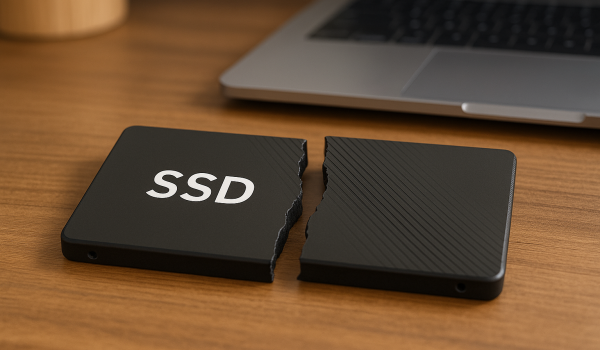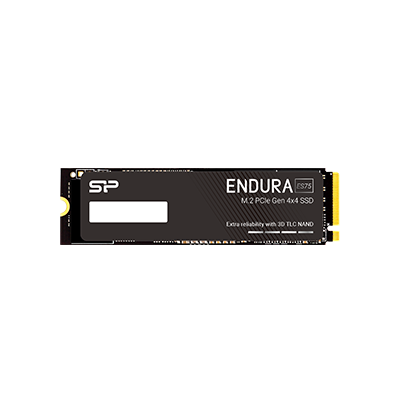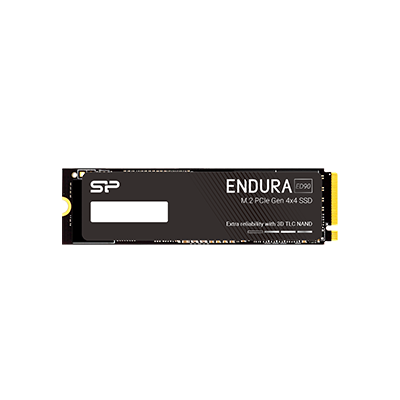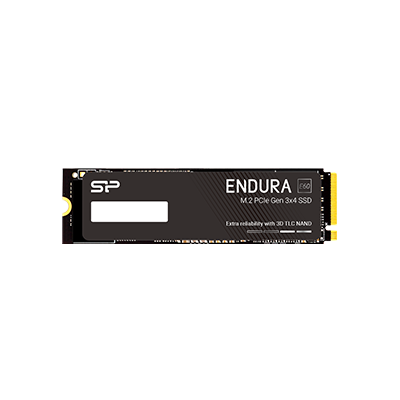What Most People Miss When Buying an SSD (Check This First!)
![]()
Buying an SSD, you’ll often see terms like TLC, QLC, and 3D NAND.
In the world of SSDs (Solid State Drives), one term that frequently pops up is “NAND flash.” If you’re shopping for a new SSD or just trying to understand the technology behind them, you may have encountered terms like TLC, QLC, and 3D NAND. These terms sound technical and confusing, but understanding them is key to choosing the right drive for your needs — whether it’s for casual PC use, gaming, or performance-critical system builds.
Menu
-SLC vs. MLC vs. TLC vs. QLC: What’s the Difference?
What Is NAND Flash?
At the heart of every SSD is NAND flash memory, a type of non-volatile storage that retains data even when there’s no power. Unlike traditional hard drives that rely on spinning platters, SSDs store information in flash memory cells, which makes them faster, quieter, and more durable.
NAND flash is constructed from tiny memory cells, each of which holds one or more bits of data. Depending on how the data is stored, NAND flash is categorized into types like SLC, MLC, TLC, and QLC. The basic difference lies in how many bits of information each cell can hold:
- SLC (Single-Level Cell): Each cell stores one bit of data. This is the fastest, most reliable, and most expensive type of NAND.
- MLC (Multi-Level Cell): Each cell stores two bits. It balances speed and cost while offering decent endurance.
- TLC (Triple-Level Cell): Each cell stores three bits. It’s affordable and commonly used in consumer-grade SSDs.
- QLC (Quad-Level Cell): Each cell stores four bits, offering low price per gigabyte but at the expense of speed and endurance.
SLC vs. MLC vs. TLC vs. QLC: What’s the Difference?
To better understand how these NAND types stack up, you’ll want to evaluate how they fare across four key metrics: performance, endurance, capacity, and price.
![]()
NAND types comparison
Performance
Performance varies because lower-density NAND, like SLC, can read and write data faster. As you move to TLC or QLC, performance decreases because the storage cells become more complex (holding multiple bits per cell increases latency).
That’s why professional users working with large files, such as video editors or gamers, often gravitate toward MLC or TLC SSDs, while general users may be fine with more affordable QLC SSDs.
Endurance
Endurance refers to how many times an SSD can be written to before it starts failing. NAND cells degrade with use, and this degradation accelerates as the bits stored per cell increase. For example:
- SLC: ~100,000 write cycles.
- TLC: ~3,000 write cycles.
- QLC: ~1,000 write cycles.
For most consumers, TLC NAND strikes a good balance between endurance and affordability. Users working with write-heavy workloads, like running virtual machines or intensive database systems, should consider SSDs specifically built for endurance.
Capacity
Higher bit storage per cell (e.g., QLC) enables manufacturers to offer larger-capacity drives at lower prices — it’s why terabyte-sized consumer SSDs are now more affordable than ever. However, adding more bits per cell can compromise endurance and performance.
Price
Price is where NAND flash evolution has played its largest role. SLC SSDs, once the gold standard, are now prohibitively expensive. Today, TLC and QLC dominate the consumer space because of their affordability. But those looking for SSDs with high reliability might choose higher-end TLC drives, which we’ll talk more about when discussing the Endura Series.
What About 3D NAND?
Now that we’re clear on TLC, QLC, and MLC NAND, let’s talk about something that gets added to their names frequently: 3D NAND.
3D NAND is an advanced manufacturing method that stacks flash memory cells vertically like a skyscraper, rather than placing them side-by-side (2D NAND). This stacking approach increases overall density and improves performance in a few key ways:
- Capacity: 3D NAND allows for higher storage capacities without taking up more physical space.
- Performance: It offers faster and more efficient data access because the structures are optimized.
- Endurance: 3D NAND enhances cell durability and longevity due to reduced cell interference.
For example, a 3D TLC SSD is generally faster and more reliable than a 2D TLC SSD, while still being affordable. Most modern SSDs, including the Endura Series, use 3D NAND technology.
![]()
Use Cases for NAND Types
Finding the right SSD depends on your workload and expectations for endurance, capacity, and performance. Here’s a quick guide:
- SLC (Single-Level Cell)
Ideal for industrial and enterprise applications where endurance and speed are critical. Example: servers. - MLC (Multi-Level Cell)
High-end consumer and professional-grade applications like video editing or gaming. Often found in premium, durable SSDs. - TLC (Triple-Level Cell)
Most widely used in consumer SSDs for general tasks: gaming, everyday PC use, etc. - QLC (Quad-Level Cell)
Designed for mass storage at a lower price — ideal for users who need affordable bulk space, like media storage or backup solutions.
Introducing the Endura Series by Silicon-Power
If you’re looking for SSDs that balance reliability, endurance, and performance, Silicon-Power’s “Endura Series” is the way to go. Built entirely on 3D TLC NAND, the Endura Series is an excellent solution for consumers and system integrators alike. Here’s a quick breakdown of the series:
- E55 (SATA III)
Capacities: 512GB, 1TB, 2TB.
Max performance: 500MB/s read, 450MB/s write.
Perfect for upgrading older laptops or desktops that lack NVMe support.
- E60 (PCIe Gen 3x4, M.2 2280)
Capacities: 512GB, 1TB, 2TB.
Max performance: 2,200MB/s read, 1,600MB/s write.
Great for budget-friendly systems, offering faster speeds than SATA.
- ED90 (PCIe Gen 4x4, M.2 2280)
Capacities: 500GB to 4TB.
Max performance: 5,000MB/s read, 4,800MB/s write.
A versatile choice for gaming or creative workloads.
- ES75 (PCIe Gen 4x4, M.2 2280)
Capacities: 1TB to 4TB.
Max performance: 7,000MB/s read, 6,500MB/s write.
Designed for power users seeking maximum performance.
The Endura Series focuses heavily on reliability and endurance, making it suitable for users with demanding needs while still being budget-friendly.
![]()
The Endura series, featuring 3D TLC NAND flash, is the latest offering from Silicon Power.
Who Needs These SSDs?
The Endura Series appeals to a wide range of users:
- General Consumers: Everyday users looking for affordable, reliable storage (E55 and E60 models).
- Gamers: High-performance gaming with minimal load times (ED90 and ES75).
- System Builders: Professionals seeking durable options for client builds.
Conclusion
Understanding the differences between TLC, QLC, and other types of NAND flash is essential when buying an SSD. For most users, a 3D TLC SSD like the Endura Series strikes the perfect balance between endurance, performance, and cost. No matter your workload, picking the right SSD makes all the difference in keeping your system fast, dependable, and future-proof.
• • •


__25G12ODR37.jpg)
__25G12rV6Tn.jpg)
